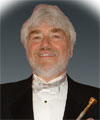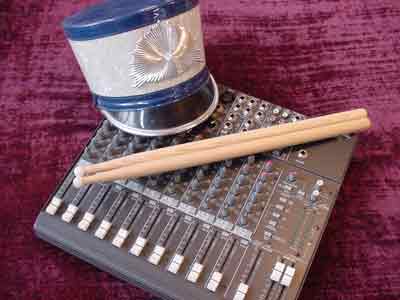Inside the Arc
“…. and the Trouble with Amps”

So, does anyone get the amplification thing right? Well, sort of, but not really. It’s almost impossible, and here’s why:
1) Current logistics promote (virtually guarantee) frequent failure. Performers will routinely take an hour or so off stage to warm up, tune and stretch but are then allotted about 180 seconds to access power, place mics, run cables, check signal flow, set levels and troubleshoot the audio, within full view of an impatient audience, while a timing czar stands over them with a stopwatch, and an MC prepares to recite that fateful mantra, “Purple Dragons, you may now take the field…etc”. What a delicious absurdity, worthy of a Hitchcock plot or at least a Twilight Zone episode.
3) The single most critical flaw, however, is the pitiful lack of expertise in utilizing the audio gear in the first place. The good news is that this is fairly easy to remedy, but many groups seem to suffer from what the psychologist Edward De Bono calls “the problem of No Problem”. They simply don’t recognize that they have one. After all, they have a couple of staff folks willing to lug all the gear around, don’t they? They plug it in, turn it on and push up the faders. What’s the problem?
To be sure, there are several additional issues, but I’ve already expended plenty of electrons herein. If we accept that the amps are here to stay, the remaining options are: a) perpetual kvetching, or b) making the best of it. Let’s choose the latter.

War and Peace in the Audio Domain
Here are some suggestions:
Logistics
Permit each group a full 5 minutes from the time equipment is powered up to do a basic sound check. If they need less, fine. (They won’t.)
Shorten the initial set up time by standardizing the stage plot for everyone. Provide a 16 input stage box at the front of the pit. The group connects all their mic cables and outputs here. Run the snake to a designated mix position that permits the mixer to simply roll up and access the mic/line outputs.
Supply some on-site stage hand help, and make it the group’s responsibility to brief them before the event. The pre-contest director’s meeting is a good time for this.
Training
Sound techs need some basic instruction and trouble-shooting skills. Off-season workshops can be sponsored by BOA, DCA, DCI…etc. These can be funded by tuition.
Adjudication
Do we need a dedicated judge or caption for audio? No. The mix is implicitly evaluated in both Music Ensemble and Effect for balance, texture, blend, quality and overall effect. And this issue is value-neutral. No credit is either given or withheld for the use or non-use of the gear, per se. All competent adjudicators already recognize this. (You wouldn’t expect to hear the following: “Nice show, but you don’t have any gamelans out there so….”.)
War and Peace. Can marching music and amplification co-exist? I doubt there’s any other option, folks.
Editor’s Note: If you missed reading it, here’s the link to Inside the Arc – Issue 7, Part 1
Frank Dorritie is one of the legends of the activity .... a performer, instructor, arranger, adjudicator, and observer over the past 5 decades. Frank has been playing the bugle and trumpet since the 1960s, and has performed with artists like Billy Cobham and Maynard Ferguson. He has instructed and/or arranged for the Blue Devils, Cadets, Santa Clara Vanguard, Cavaliers, Chesterton and Tenri High Schools, the Bushwackers, Bridgemen and a host of others. His audio production honors include 9 Grammy Nominations, 2 Grammy Awards and membership in both the World Drum Corps and Buglers Halls of Fame. He is active internationally as a clinician and adjudicator, holds the DCA Soprano/Trumpet/Tenor Individual titles for 2003, 2005 and 2006. Frank also chairs the Department of Recording Arts at Los Medanos College. His popular brass method book, “Power and Endurance”, is available from Xtremebrass.com. The opinions expressed in this column are strictly those of the author.
Posted by Frank Dorritie on Thursday, January 24th, 2008. Filed under Inside the Arc.
